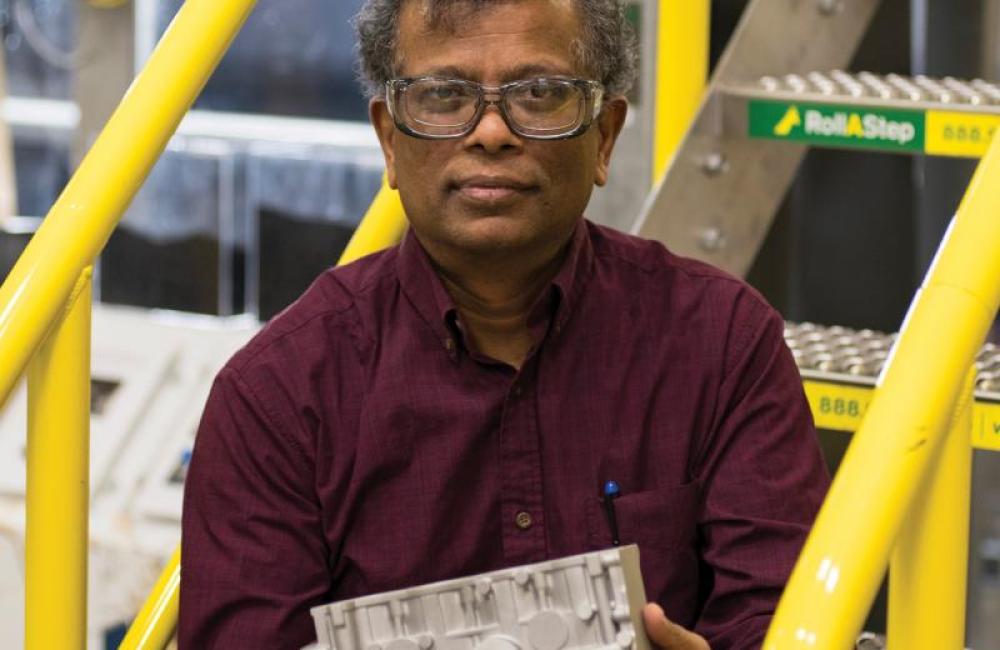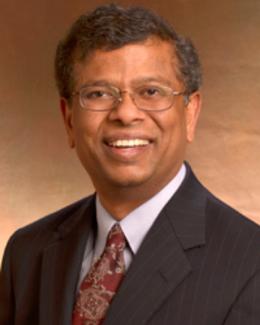ORNL advances additive manufacturing
Additive manufacturing has many advantages over traditional manufacturing. It creates parts with essentially no waste. It produces complex designs as easily as simple ones. And it can go from design to finished product in a matter of hours rather than weeks or months.
As impressive as it is, however, additive manufacturing does have its challenges, chief among them controlling the material properties within a printed object.
“We wrongly assume that what you print will be identical to what was designed,” said Suresh Babu, who holds the Governor’s Chair for Advanced Manufacturing at the University of Tennessee and ORNL. “Printing a material involves a very complex temperature profile for the material due to multiple heating, melting, and cooling events that are all interconnected and inherently dependent on one another.”
The challenge is that this complex process governs the underlying physics of the material—things such as porosity, defect structure, and nonuniform microstructures—and creates uncertainty over how the part will ultimately perform. This uncertainty means industry must conduct exhaustive testing and inspection that drive up cost and can limit the real-world usefulness of additive manufacturing.
If the business case warrants, process controls can be implemented to certify additively manufactured components, such as for a General Electric–produced fuel-injector tip that improved the fuel efficiency, emissions and reliability of turbine technology critical for aircraft engines. Yet the process is lengthy and expensive.
When the geometry of a printed part changes, the entire certification process must be performed for the new geometry.
“In order for additive manufacturing technologies to be widely implemented in industrial applications, we must revolutionize how we think about the certification process,” said Vincent Paquit, imaging scientist and data analytics lead for ORNL’s Manufacturing Demonstration Facility. “We need to get to where we can certify the process, not individual parts.”
“Another major challenge in additive manufacturing is residual stress and distortion,” said Ryan Dehoff, leader of the lab’s Deposition Science and Technology Group. “These complicated thermal cycles during processing result in a lot of internal residual stress and can vary widely within a part, which ultimately manifests itself in distortion.”
Neutron analysis at ORNL’s High Flux Isotope Reactor and Spallation Neutron Source are especially good at detecting residual stress and defects within a part. Among other benefits, it can show warping and porosity in a large component without the necessity of cutting that component apart.
“The advantage of neutrons is they can go through metals quite easily,” said ORNL neutron scientist Hassina Bilheux. “You can see internal structures and features in an additive manufacturing sample. Right now, if you want to do this with X-rays, it’s extremely hard. You need to crank up the energy in your X-rays, and by doing that you lose resolution.”
To take full advantage of the insights provided by neutrons, researchers must first thoroughly monitor the conditions under which a part is produced. Infrared cameras collect the exact temperature when a beam hits the powder bed, while other instruments monitor the pressure within the print chamber, roughness of the print surface, variations in the power supply and other information.
“We start by collecting as much data as possible to establish a link between process intent and final outcome,” Paquit said. “Every additional sensor adds value to the puzzle.”
To better help industry understand and utilize additive manufacturing, ORNL has created a portfolio of open-source software tools to help users understand the nuances of the process. These tools can be used to certify that the machine is operating as expected and creating quality material.
In addition, an interdisciplinary team at ORNL is contextualizing data analytics results by combining expertise in materials science, manufacturing, data analytics, sensing, modeling, high-performance computing and neutron science to link the physical phenomena and process outcomes.
“The goal is to examine the compiled data and find the set of events that will induce a certain type of defect, microstructure or property,” Paquit said. “At the end of the day, what we want to be able to do is train a machine-learning technique that will automatically capture this information and output it as a quality metric.”
As this process moves forward, it may allow printed parts to be used in critical applications, paving the way for in-depth analysis of every printed part that can be put directly into service, components that are “born qualified.”
“I can clearly envision critical parts going on a plane, and the government requiring you to keep a record of everything that happened in the print chamber every single time,” Paquit said. “The aerospace industry will validate every single object that comes out of a 3D printer. They will not fly anything that’s not 100 percent certified for final use. “Quality control will definitely not go away.”




